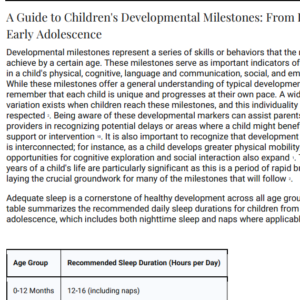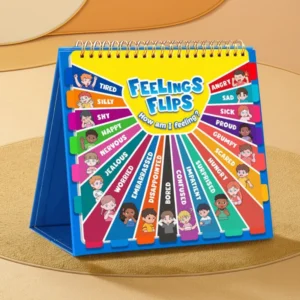
Okay, let’s talk directly, parent to parent (even though some fantastic therapists might be reading in too!). If you’re raising an autistic child, you know that feeling of trying to navigate moments of intense overwhelm – yours and theirs. That feeling like the world just becomes too much? It’s real, it’s exhausting, and sometimes, it’s completely baffling.
When your child experiences those huge reactions – the ones that might look like massive tantrums, complete shutdowns, or anything in between – it’s so easy to feel lost, frustrated, or even judged. But here’s something crucial I want you to hold onto: These intense moments are very rarely about defiance or being ‘bad.’ They are almost always involuntary responses. Think of it like a system overload, a distress signal saying, “I can’t cope right now!”
Understanding what might be happening inside for your child during these times is the first step towards finding ways to support them (and yourself!) through it. Let’s break down some common experiences, moving past labels to get to the heart of it.
1. Meltdowns vs. Shutdowns: When the System Overloads
Imagine your child’s brain and body like a computer with too many programs running. Eventually, it either crashes loudly or freezes completely. Neither is intentional; both mean the system is overloaded.
- Meltdowns: This is the outward “crash.” It’s distressing to watch, and often involves:
- Big Verbal Reactions: Crying, screaming, maybe repeating words or sounds.
- Physical Reactions: Kicking, hitting (themselves, others, or objects), throwing things, dropping to the floor.
- What it often means: “This is too much! I need escape! Help!” It’s a powerful, albeit dysregulated, way of signaling extreme distress or trying to get away from something unbearable.
- Shutdowns: This is the internal “freeze.” It can be quieter, but just as intense inside:
- Going Quiet: Suddenly unable to talk or respond.
- Withdrawing: Avoiding eye contact, curling up, seeming to “zone out.”
- Becoming Still: Limiting movement, maybe looking numb or emotionless (though internally, feelings are often overwhelming).
- What it often means: “I’m overwhelmed and need to block out the input. I need space.” It’s an attempt to cope by minimizing external stimulation.
The Bottom Line for Parents: Whether it looks explosive or implosive, it signals your child is past their coping limit. They need safety, calm, and fewer demands in that moment, not lectures or punishment. (Therapists reading this know how vital it is we help parents see the function behind the form).
Let’s Try This (A Little Self-Reflection): Think about how you react when you’re pushed past your absolute limit. Do you get loud and agitated, or do you shut down and want to hide? Connecting with your own stress responses can build a little bridge of empathy to what your child might be experiencing, even if theirs looks much bigger.
2. Sensory Overload: When Everyday Sensations Hurt
Imagine the tag in your shirt feeling like sandpaper, the hum of the fridge sounding like a lawnmower, or bright lights feeling like interrogation lamps. For many autistic children, everyday sights, sounds, textures, smells, and tastes can be physically uncomfortable or even painful.
- Hypersensitivity (Too Much): Normal input feels overwhelming. This might be why your child avoids certain clothes, covers their ears in noisy places, dislikes messy play, or is a very selective eater.
- Hyposensitivity (Not Enough): Needing more sensory input to feel regulated. This might look like constant movement, crashing into things, needing tight hugs, chewing on non-food items, or seeming unaware of pain.
Parent Reality Check: This isn’t just being “fussy.” It’s a real neurological difference. Understanding your child’s unique sensory needs is huge. Are there patterns? Do certain environments trigger overload? (This is often where Occupational Therapists offer fantastic strategies, working alongside other therapists and you). Knowing these triggers helps you anticipate and modify situations, or provide tools (like headphones or fidgets) to help your child cope before overload hits.
3. Emotional Overload: Feeling Everything So Deeply
Does your child sometimes have huge emotional reactions to things that seem small to you? Or struggle to calm down once upset?
- Naming Feelings is Hard: Many autistic individuals find it difficult to identify exactly what emotion they’re feeling (this is called alexithymia). If you can’t name it, managing it is much tougher.
- Delayed Reactions: Sometimes the emotional impact hits later, making the reaction seem disconnected from the cause.
- Intensity is Real: Their internal emotional experience can be incredibly intense. A change in routine might genuinely feel catastrophic inside.
- Calming Down Takes Time: Once overwhelmed, their system needs more time and often active help (co-regulation) to return to a calm state.
Message to Your Heart, Parent: Your child isn’t being manipulative or overly dramatic. Their feelings are valid and powerful. Therapy (often incorporating behavioral techniques focused on skill-building) can help them learn to recognize emotional cues, develop coping strategies that work for them, and find ways to communicate their needs before boiling over. It’s about giving them tools, not suppressing their feelings.
4. Communication Meets Overwhelm: The Frustration Factor
Imagine desperately needing help, comfort, or a break, but not having the words or ability to express it in that moment. Frustration skyrockets, and often, the only way out is an intense reaction.
- Words Fail: Difficulty finding the right words, or understanding spoken language, especially when stressed.
- Social Confusion: Misinterpreting cues or unspoken rules can lead to constant anxiety.
- Demand Avoidance: Sometimes resisting requests isn’t defiance, but an anxiety-driven need to maintain autonomy, which can escalate if met with pressure.
- Behavior IS Communication: Remember, a meltdown or shutdown might be your child’s way of screaming “NO!” or “I’m scared!” when other communication fails. Listen to the message behind the behavior.
Let’s Connect (Share Your Wisdom!): Think about how frustrating it is when you feel misunderstood. Our kids feel that too, often much more intensely. Finding ways they can communicate effectively (words, pictures, devices, gestures) is key. What communication wins have you had? What helps your child express their needs, especially when stressed? Share your experiences in the comments – other parents (and therapists!) can learn so much from you.
Key Things to Hold Onto:
- Your Child is Unique: What overwhelms one child might not affect another. Get curious about your child’s specific triggers and patterns.
- Look Past the Surface: Meltdowns and shutdowns are signals of distress, not character flaws.
- Their Feelings Are Real: Validate their intense experience, even if you don’t fully understand the trigger.
- It’s a Response, Not Bad Behavior: Shift your lens from seeing misbehavior to seeing a stress response.
Understanding is power. It allows you, as parents, to shift from reacting in frustration to responding with compassion and targeted support. It helps you advocate for your child and partner more effectively with therapists and educators. You’re not alone in this, and by sharing knowledge and experiences, we build a stronger support system for everyone.









